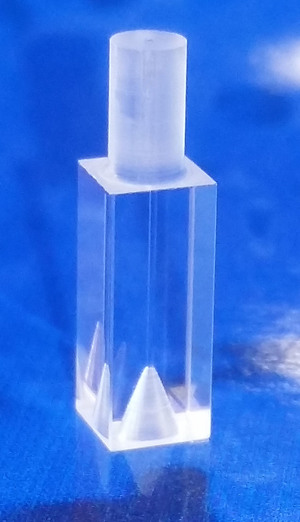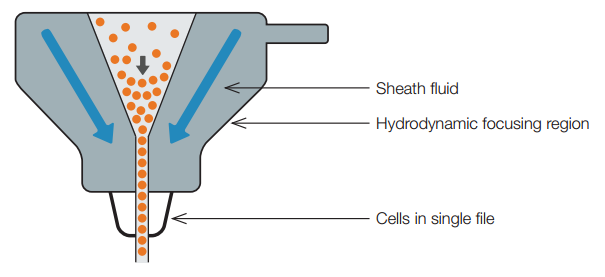Hydrodynamic Focusing- The Conga Line of Flow Cytometry!
/Howdy, everybody! It's time to discuss an issue near and dear to the hearts of anyone that has ever dabbled in flow cytometry- hydrodynamic focusing!
What is Hydrodynamic Focusing?
Hydrodynamic focusing is a technique that enables users of flow cytometry cells to gauge the size of particles in a flow channel, whether they be blood cells, viruses or bacteria. A typical flow channel will be something as large as 2-3mm in diameter all the way down to a miniscule 50µm. As particles enter the chamber they will typically pass through a laser beam which causes a temporary disruption in the optics. The size and nature of these disruptions are what cause an instrument to be able to measure the particle's size.
The trick is to get the cells to line up single file like a conga line so that they can be interrogated one at a time. This is where the principle of hydrodynamic focusing comes into play. Hydrodynamic focusing enables the flow channel to be coating by fluid, also referred to as sheath, creating a wall through which the sample can pass undisturbed. Essentially, a sandwich is created with two walls of sheath fluid and the sample core flowing on the inside. The sheath fluid runs at flow speeds, which ensures minimal disruption between the two sides of fluid. The main goal here is to prevent the two walls from mixing and thus disrupting particle flow. This is called laminar flow. Often saline solutions are deployed for this but even water with a small amount of surfactant is sometimes used to reduce surface tension.
Inlet Cones for Improved Hydrodynamic Focusing
Another trick that can be deployed in hydrodynamic focusing is a cone, which even further focuses the flow stream into a narrow, three-layered sheath/sample sandwich. By manipulating the flow rates of the sheath, the core sample stream can be even further focused through the flow channel. It is important that the cone not have rough ridges in order that it can reduce any turbulence that might disturb the sheath layers or core stream.
Other instruments are even able to utilize the principle of sheath fluidics and hydrodynamic focusing with a nozzle-based system and no flow cytometry cells. The way this works is by gathering the sheath fluid and core stream inside the nozzle and firing out a single-file core stream vertically downward in a minuscule, high-pressure fashion.
The principle of hydrodynamic focusing and sheathing can be used to devise advanced devices called microfluidic chips or "lab-on-a-chip" technologies, which we will discuss in later articles!
Party on, Conga dancers!
The FireflySci Team
![firefly_logo_FINAL [Black].jpg](https://images.squarespace-cdn.com/content/v1/5411d5c0e4b02e1c8b27565a/1434491508803-XB4OF7YDY46Z72L5U5AP/firefly_logo_FINAL+%5BBlack%5D.jpg)







